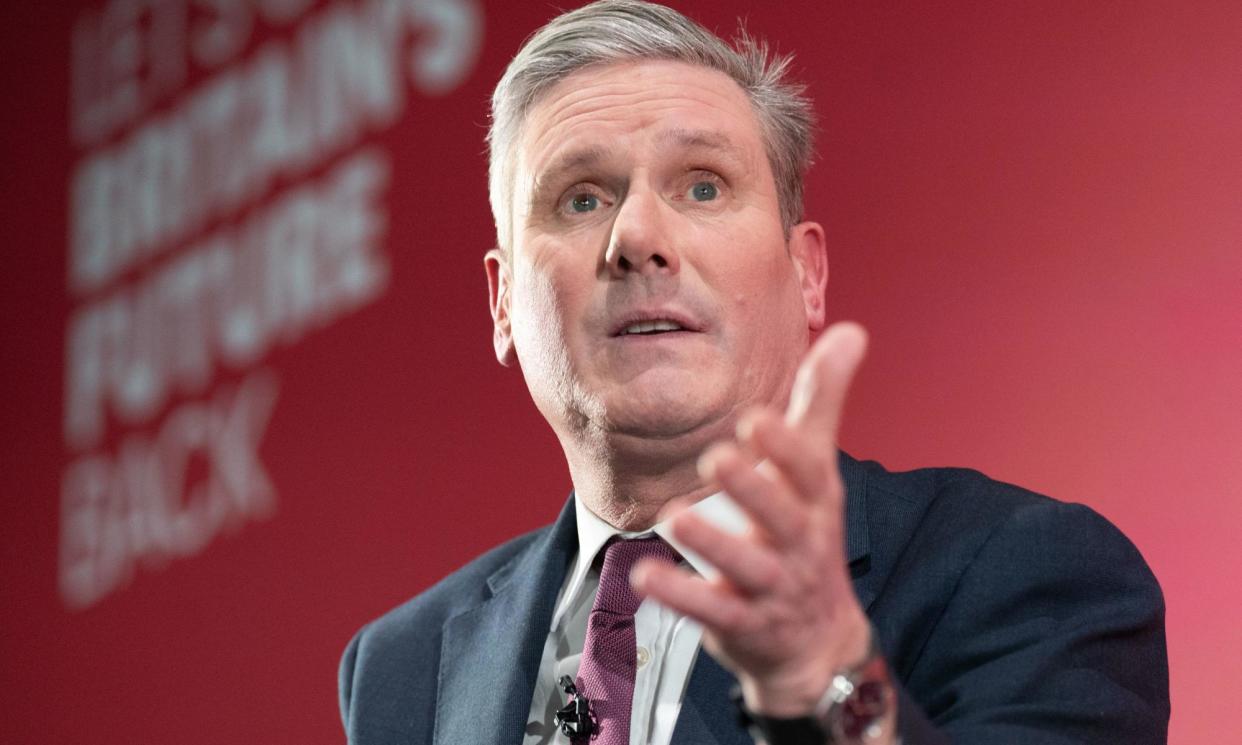The Observer view: Labour’s green U-turn has threatened its plan for growth

Shadow chancellor Rachel Reeves promised to be Britain’s first “green chancellor” when she announced in 2021 that a Labour government would invest £28bn a year in greening the economy. A little over two years later, and the Labour party has unceremoniously dropped this commitment, instead pledging to spend a more modest £4.8bn a year over the next parliament on green investment, over and above the government’s existing investment plans.
Labour says this is part of its broader commitment to fiscal responsibility; but in the week that the EU’s climate service announced that global heating had exceeded 1.5C across an entire year for the first time, environmentalists have expressed concerns that it might signal a diminishing commitment to tackling the climate crisis. While Labour’s plans still represent a significant increase in green investment, there are certainly questions about whether it goes far enough. Moreover, the reduction leaves a big hole in the party’s plans to expand the economy by boosting lagging levels of public and private investment.
Because the government shifted its planned spending on the green transition since Reeves’ 2021 announcement, Labour’s original commitment to spend £28bn a year amounted to an additional £20bn a year on top of government plans. The revised announcement reduces that by three-quarters, with about 40% funded through hiking windfall taxes on oil and gas. The rest will be funded through additional borrowing, which Reeves is assuming will still allow Labour to meet the fiscal rules she has set. Labour has justified this scaling back because, as it rightly points out, the cost of government borrowing has risen sharply since its original announcement, thanks to rising inflation and interest rates in the last two years. It is also true that it was unrealistic to believe that a new government could raise spending on green investment to this level immediately on taking office.
That said, this planned reduction could have an impact not just on the speed at which the UK can transition to net zero, but also on energy bills. Labour’s warm home plans will be cut by a fifth, meaning many fewer homes will be insulated during a first Labour term. There will also be implications for the transition to electric vehicles. The party is still planning to spend £8.3bn to achieve its clean power pledge to decarbonise the UK’s energy supply by 2030, although this will be made more difficult by delays in building the new nuclear power station Hinkley Point C. So the implications for the UK’s green transition are concerning, although there is no question that a Labour government would be far better for the climate than a Conservative one.
But there are also implications for economic growth. The beauty of Labour’s “green prosperity plan” was that it was double-headed: it would be good for the climate, but also provide a vital and significantinjection of public investment to kickstart Britain’s sluggish productivity growth. By effectively adopting the arbitrary fiscal rule Jeremy Hunt has set that debt must be forecast to be falling in five years’ time – a rule that Paul Johnson, director of the Institute for Fiscal Studies, calls “basically silly” – Reeves is hemming a Labour government into the Tories’ macroeconomic worldview.
There may be good political reasons to do so; Labour leader Keir Starmer and Reeves are rightly concerned to avoid a political trap Rishi Sunak and Hunt are trying to set, so they can make the argument that much-needed higher levels of investment by a Labour government would necessitate higher taxes. The problem is, it is the wrong economic strategy. Public and private investment is the engine of growth; yet in the 40 years to 2019, average annual investment in the UK was the lowest of any G7 country, and levels of UK public investment over the last two decades have been at two-thirds of the level of competitor countries. Together with Brexit, this has made us all much poorer than we would otherwise be, and the gap between London and the south-east and the rest of the country has widened in recent years.
Stimulating private investment through higher levels of public investment in the green transition is vital to growing the economy. And that is crucial to generating the tax revenue that Labour will need to draw on in order to restore the public realm, from an NHS with record waiting lists to services for vulnerable children and homeless people. The green prosperity plan was Labour’s plan for doing this; in other areas like housing, roads, and hospitals it was planning to stick to Conservative plans for public investment. Just as significant as any impact for the climate is the fact that Labour’s overall plans for public investment after the next election are now only marginally higher than the Conservatives’.
Of course, Labour politicians have a delicate path to pick through, setting out a plan that can revive not just the economy but the whole country, while not making themselves vulnerable to bad-faith Tory attacks. But the economic situation today is fundamentally different to the last time Labour was in opposition with a big poll lead in the mid-1990s; back then the City was booming and delivered significant, albeit ultimately unsustainable, revenues to the exchequer. Last week’s announcement to scale down its green prosperity plan means Labour has considerably more work to do on its plans for growth before an election.


